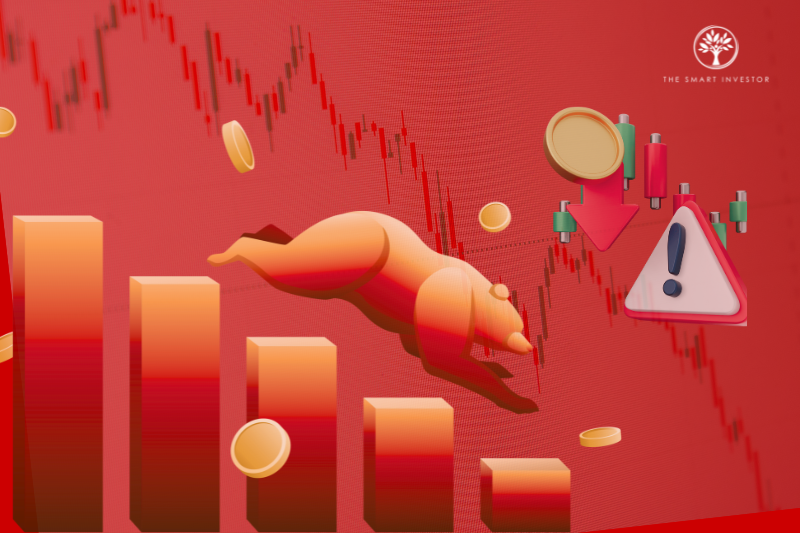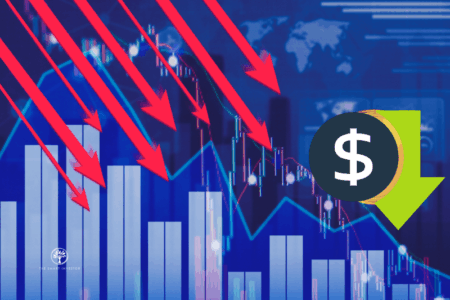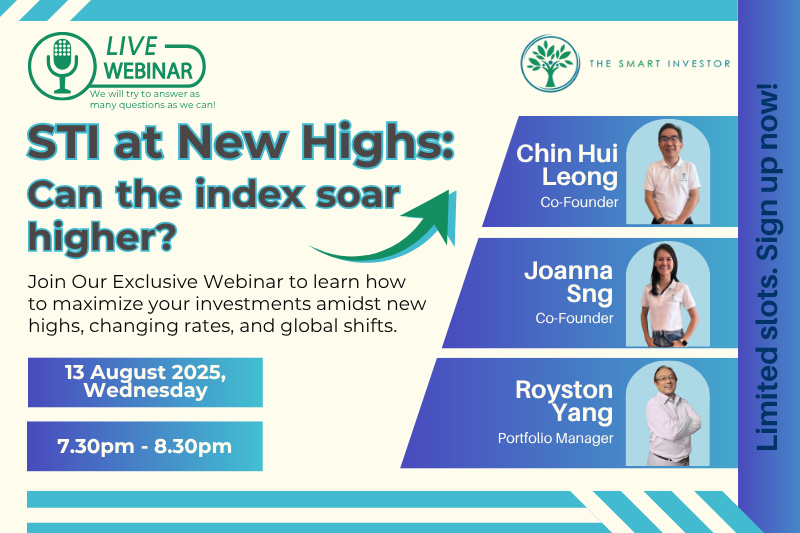Here’s what few tell you about market declines: they’re not the exception.
They’re the rule.
When we look at Singapore’s Straits Times Index (SGX: ^STI), history gives us a sobering reality check.
For the 32-year period between 1993 and 2024, the market experienced a peak-to-trough decline of 10 per cent or more in all but six of those years.
Put another way, about eight out of every 10 years saw a market correction.
Downturns of over 20 per cent are less frequent but still fairly common, happening in roughly one out of every three years.
The enclosed graph provides a summary.
Source: S&P Global Market Intelligence; Yahoo Finance; The Wall Street Journal; author’s calculation
The odds are similar when we look at the US market.
According to wealth manager Ben Carlson, the S&P 500 also experiences a 10 per cent correction about once every year-and-a-half or so.
A bear market, defined as a fall of 20 per cent or more, historically hits the S&P 500 once every four years.
So, now you know the odds.
But here’s the point most people miss: knowing the odds of a storm does not tell you when it will start to rain.
The Flaw in Averages
It’s tempting to take these historical odds and create a mental calendar for market crashes.
Simply put, if a bear market happens at the STI once every three years, and we haven’t had one in a while, one must be just around the corner, right?
Unfortunately, the market doesn’t operate on a tidy schedule.
There’s a difference between theory and practice.
The odds are based on averages, and averages can be misleading.
Think about it: averages are like having one hand in boiling water and the other in ice.
The average temperature is supposed to be warm, but you’re still getting burned.
Furthermore, history shows that while the odds of a market decline holds true over long periods, the market can go for years without a significant decline.
For instance, between 2003 and 2007, and again from 2016 to 2019, the STI did not experience a single 20 per cent decline.
The same goes for the period between 2021 and 2024.
Investors sitting on the sidelines waiting for a “predictable” crash would have been left behind.
This is the flaw in timing the market: you are trading one kind of risk for another.
By trying to avoid a decline, you’re taking on the risk of missing out when the market goes on a bull run.
Legendary investor Peter Lynch said it best: “Far more money has been lost by investors preparing for corrections than has been lost in corrections themselves.”
The Paradox of Bull and Bear Markets
As of last Friday (8 Aug 2025), both the STI and S&P 500 sit less than one per cent away from their all-time highs.
By most measures, we’re deep into bull market territory.
The numbers tell the story: the S&P 500 has surged by nearly 80 per cent since its 2022 low.
Some stocks have done even better.
Nvidia (NASDAQ: NVDA) shares are up almost 16x over the same period.
If you’re a Nvidia shareholder, you’re probably kicking yourself for not buying more three years ago.
Looking back, those 2022 lows now seem like screaming buy opportunities.
But here’s the twist: success has bred a new kind of fear.
If you own shares today, you dread losing what you’ve gained.
If you don’t own shares, buying at these highs feels like financial suicide.
Either way, the next market crash now looks like pure risk—nobody wants to watch their portfolio turn from green to red.
In effect, crashes have become the enemy in investors’ minds.
But wait a minute.
Didn’t we just say that 2022’s low was a golden buying opportunity?
So, how can future market declines also be the biggest risk today?
Said another way, how can crashes be both opportunity and risk?
Morgan Housel, best-selling author and partner at Collaborative Fund, said it best: “Every past market decline looks like an opportunity, every future decline looks like a risk.”
That’s the paradox investors face today.
You can’t have it both ways. If you want bargain prices, you have to embrace the declines.
Get Smart: Prepare, Don’t Predict
So what should you do when you know that market crashes are inevitable?
For starters, accept the odds.
But use them to prepare, not predict.
Peter Lynch said it best: it’s not our brains, but our stomachs, that determine success in the stock market.
Knowing that 10 per cent drops happen almost annually should spur us to prepare for when they arrive.
Instead of trying to guess when the next downturn will happen, spend your time building a plan for what you will do when it does.
- Write it down: Keep an investing journal documenting why you own each stock. When fear strikes, your past rational self becomes your best guide.
- Have a watchlist: Curate great businesses you’d love to own at a cheaper stock price. A market crash is terrible to waste—preparation lets you act with conviction, not fear.
- Think in years, not months: When doubts creep in about the current market, Lynch suggests focusing on the Even Bigger Picture. In his book “Beating the Street”, he notes that stocks have delivered 11% annual returns to patient owners—more than double what treasury bills, bonds, and certificates of deposits have provided.
Remember: market crashes are a feature, not a bug.
Embrace the odds, have a plan, and let time work its magic.
Dive into the future of technology with our newest FREE report, “The Rise of Titans.” Discover how the big 7 US tech stocks can be your ticket to huge long-term gains. Download your copy today and see how easy it is to supercharge your portfolio.
Follow us on Facebook, Instagram and Telegram for the latest investing news and analyses!
An earlier version of this article appeared in The Business Times.
Disclosure: Chin Hui Leong does not own any of the shares mentioned.






